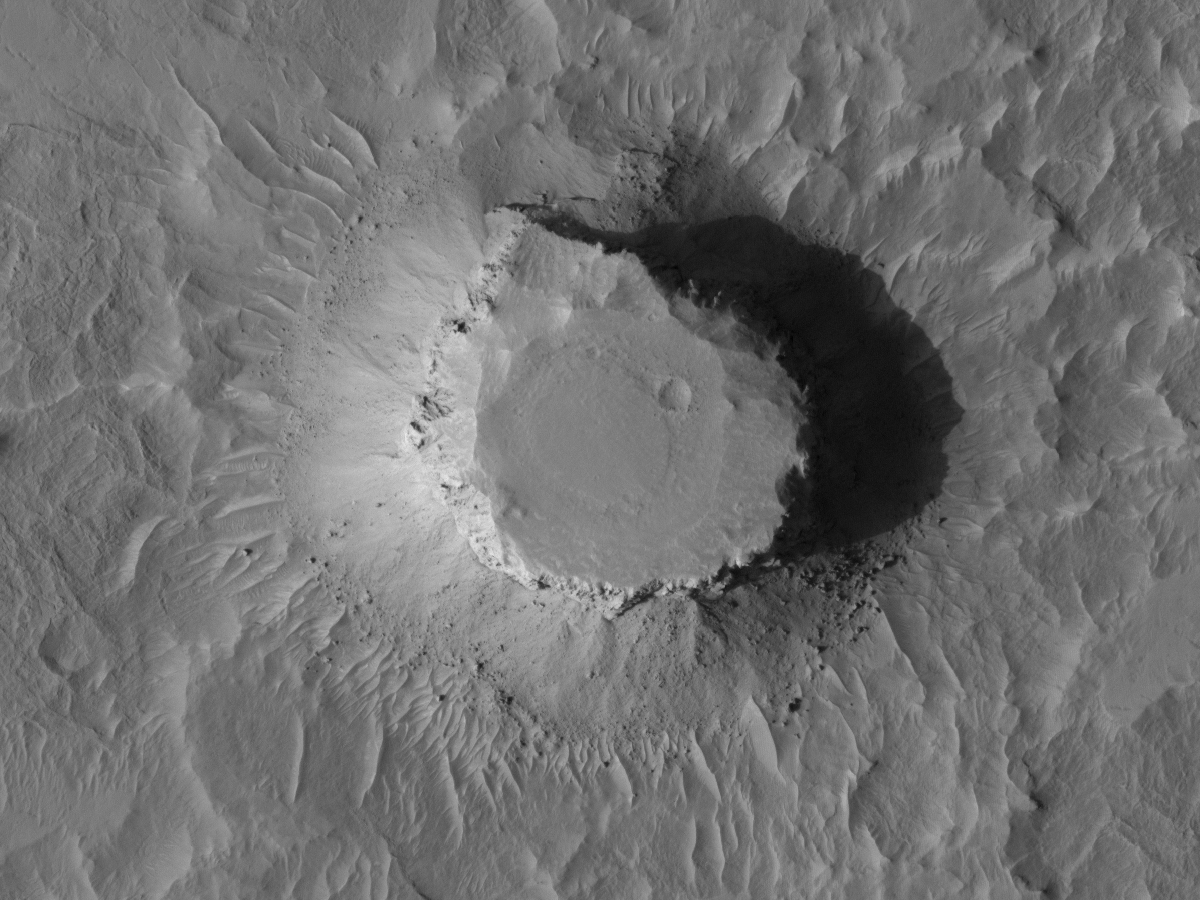Inverted crater

MAHLI landscapes
November 25, 2014
Aeolian shoreline
December 8, 2014 A piece of Mars: This circular hill is 200 m (~656 ft) across and ~48 m (~160 ft) high. It stands alone on a relatively flat plain. Why is it there? The surface here used to be ~48 m higher than it is now – on that old surface, a crater formed. The crater was filled in by sediment. And then the surrounding terrain was eroded away by the wind (that’s a whole lot of stuff to be removed over time!). What’s left is the old crater fill, but one day it too will be blown away. (HiRISE ESP_038309_1870, NASA/JPL/Univ. of Arizona)
A piece of Mars: This circular hill is 200 m (~656 ft) across and ~48 m (~160 ft) high. It stands alone on a relatively flat plain. Why is it there? The surface here used to be ~48 m higher than it is now – on that old surface, a crater formed. The crater was filled in by sediment. And then the surrounding terrain was eroded away by the wind (that’s a whole lot of stuff to be removed over time!). What’s left is the old crater fill, but one day it too will be blown away. (HiRISE ESP_038309_1870, NASA/JPL/Univ. of Arizona)




8 Comments
Crater on fluid-bearing target rock might be new type crater with local melting on the floor and poor ejects rim, which might be formed on Mars in this case and not the case in global water planet of our Earth. Yas
Craters with fluidized ejecta (rampart craters) are found on Mars, and they are thought to be formed when heat from the impact melts ice in the local bedrock. The ejecta from this particular crater is long gone, so it’s not clear whether it had fluidized ejecta or not. Some terrestrial craters also have fluidized ejecta, but it’s generally not visible from orbit (craters on Earth erode so quickly that a careful field study is typically required to demonstrate the presence of fluid).
It’s not hard-rock type impact crater of Earth-land type. We need more detailed survey on surface (not image only) but I might say that fluids are formed quickly and lost immediately during impact process (except remained outcrop). Point is that previous fluids near the crater site should be evaporated after extreme impacts (as in Earth crater), so that melted or flowed outcrop herewith mean generation during Mars-type impacts presumably. Good luck more data!
If I sprinkle flour on a hard surface and hit it hard with a hammer then blow the loose flour away, I’m left with a hard disc of consolidated flour. Could the force of an impact create the same situation here?
That’s one way it could happen. Here we’re not looking at the floor of the crater (which would be bowl-shaped), but at the sediments that filled it up. So something happened to that crater fill that didn’t happen to the surrounding plains (which may be made of the same kind of sediment). Maybe the rim of the crater once poked through the sediment cover, protecting what was inside from aeolian erosion. The rim and the surrounding sediment eroded away, and what’s left is the relatively resistant sediment inside.
Thank you Lori, Im happy with that.
Looks a bit like Devil’s Tower in Wyoming!
Yep, it’s the same idea. Everything else in the landscape has eroded away and this is what’s left. The only difference is that Devil’s Tower was the core of a volcano, and this was an impact crater.